Quick update on Alibaba Group Holdings (NYSE: Baba) technical chart.
Do note that this is based on the NYSE US listed chart so if you’d like to convert them into HK figures, the ADRs to note is 1:8 with an exchange rate of about 7.75. So Baba’s share price at $160 in the US would be equivalent to US$160 / 8 x 7.75 = $155.
First, let’s take a look at the Fibonacci retracement level.
This is based on weekly chart – we have now retraced and broken the 78% percentile which was previously at $170. The stock closed at yesterday closing at $160.
In terms of recent price action over the past couple of days, this resembles a capitulation where there are a huge increasing spike in volume accompanied by empty gaps in between the drop. This means that there are relentless selling throughout and it is likely that many people get stop out from their stop loss. This could also indicate margin call scenario where retail investors are being pulled out and asked to deleverage from these tech counters.
If we take at similar price action back in the 2018 plunge and the more recent 2019, the drop over the 5 days period is also accompanied with increasing huge volume so we may be looking at pretty much the same sort of scenario.
From the weekly chart support, we have broken the last COVID low and may now be heading towards the next immediate support at $148 range. If we failed that, then we may test the ultimate support which is at $129, the support held during the 2018 plunge.
Do remember that we may or may not go there so it is not always a certainty. The fundamentals of the company has since improved from what we saw back in 2018 and 2019 even with all the regulations factored in so from a valuation perspective we are getting an attractive level even if the price action is higher.
For readers who did not follow my Facebook page, I have entered into my last batch position at $162 on the NYSE market yesterday night. Sure, it doesn’t give me the bottom which everyone in the entire world seems to be looking out for, but it has pushed my average price now to a decent level of ~ $190, which is in the zone of “I think I can live with this” scenario.

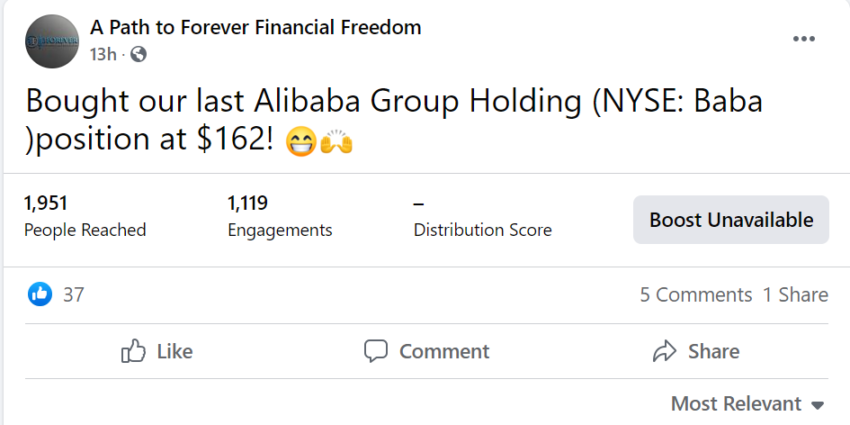
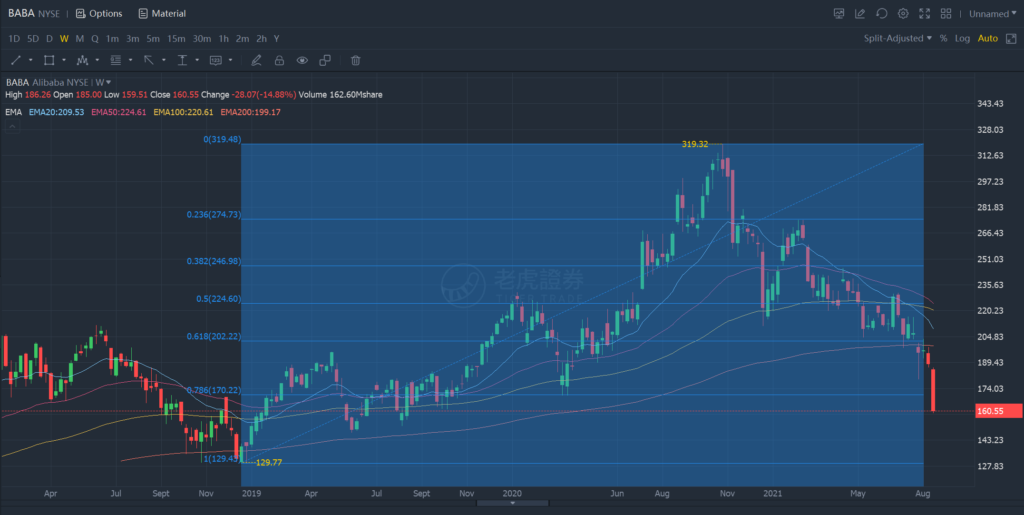
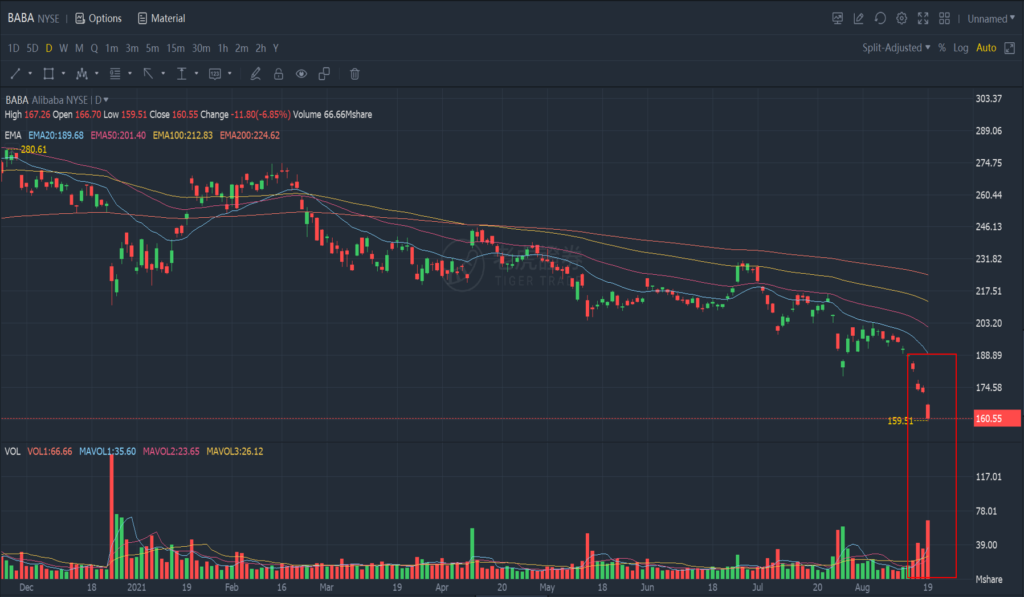
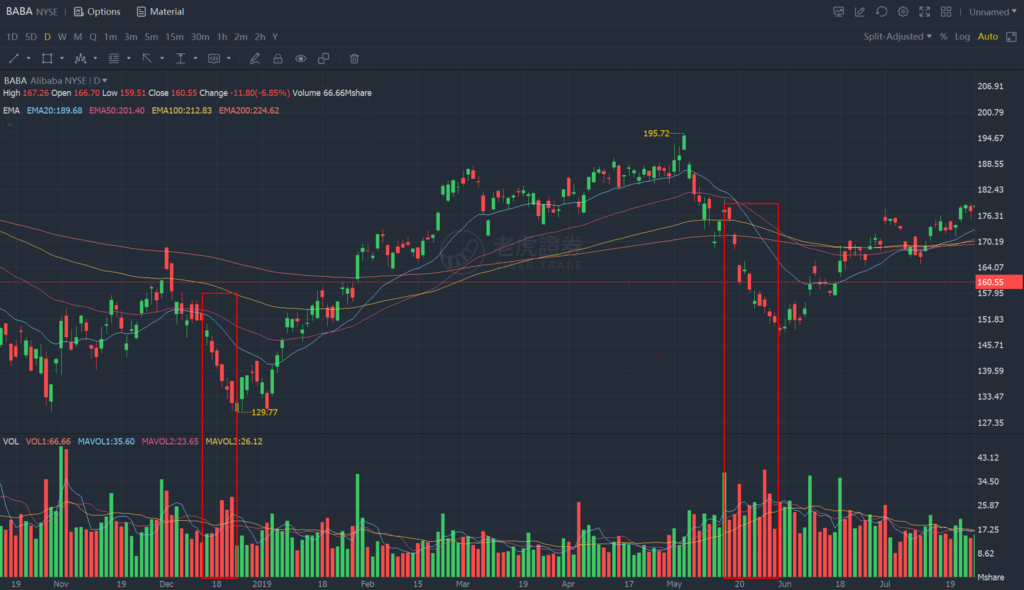
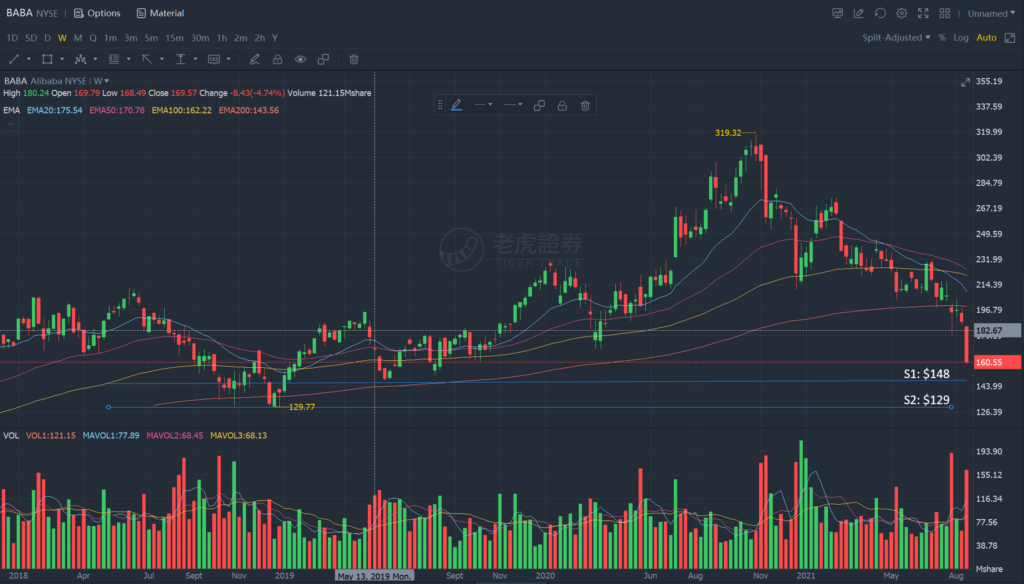

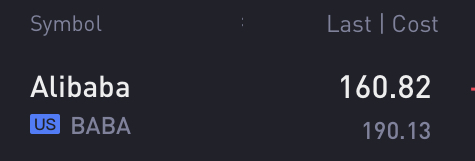

Hi Brian, thanks for sharing. Based on your recent sharing, you probably would have doubled down on your Alibaba holding to bring your average cost to 190 since your last position is 500 shares at $222.6 (Ignoring the 100 shares you added somewhere in between). Your last tranche would likely cost around S$110k. Based on 10% margin, it would likely have utilized about S$12k of your remaining margin. Since your last portfolio sharing, your remaining cash is around S$20k. With this, it would probably dwindle down to less than S$10k. Would this be a little risky and put you in a position of a margin call should things tank further? Or would you be readying some more cash to inject into your portfolio? Just wondering how you intend to manage your risk. Thanks for sharing again!
Hi Michelle
I have utilized some of my emergency funds warchest and try to maintain my margin a bit more flexible with it. In the case of deleveraging, that can be done through several ways, either by selling some cash positions on hand or simply cut on a few positions that are currently on leverage.
Hello Bryan, thanks for your constant updates to your portfolio and deep insights in all the analyses you post. Always a joy to be reading your blog 🙂
I have also a position in Alibaba which I initiated the past few days and have been averaging lower bit by bit. Seeing it drop like this is rather unsettling but I share a similar view that its capitulating and (hopefully) bottoming soon (barring any additional negative updates from Beijing, hopefully). There seems to be also a general avoidance of Alibaba among the US investors which seems to also suggest a “giving up” on the stock. If we reference it to stock market crashes, where everyone is “giving up” and may suggest the bottom is near.
Look forward to the rainbow after the rain!
Hi Daniel
Investing in downward spiral is always an unsettling nerve but try to look at the bigger picture and we can only control what we can. The rest isn’t up to us and neither it is decided by the rest of the market. Let’s wait till time proves it.